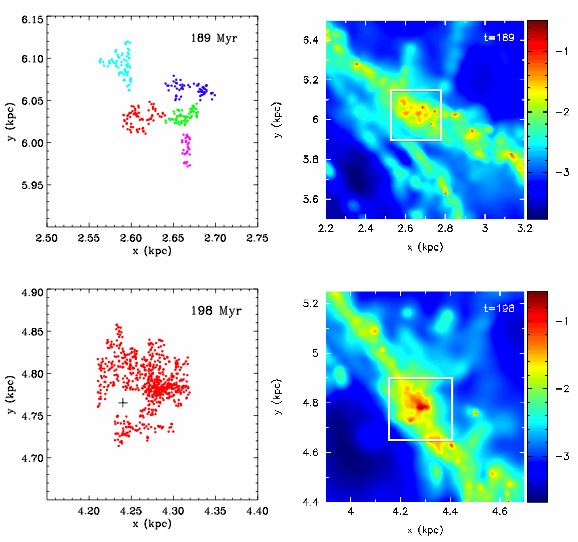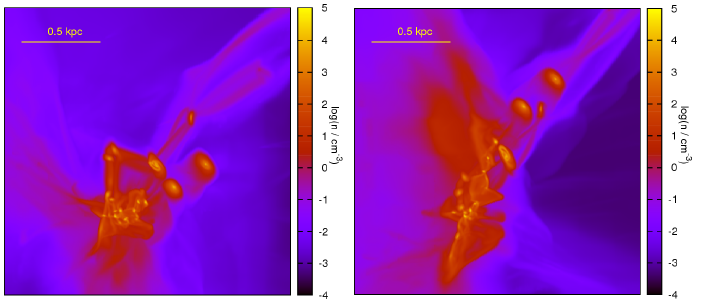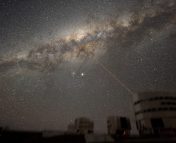- Title: Why are most molecular clouds not gravitationally bound?
- Authors: C.L. Dobbs, A. Burkert, J.E. Pringle
- Institution of first author: Max-Planck Institute for Astrophysics, Germany
Introduction
Molecular clouds are the site of star formation, so it is important to understand their structure and dynamics. It is commonly believed that they are gravitationally bound (held together by mutual gravitational attraction), which creates a problem: the star formation rate should be about a 100 times what is observed. Several ideas have been put forward in order to address this issue, which fall into the category of either slowing down gravitational collapse (e.g. by magnetic fields or turbulence) or making clouds short-lived (e.g. by stellar feedback or again by magnetic fields).
In this paper, Dobbs, Burkert & Pringle suggest that most molecular clouds are not in fact gravitationally bound, which circumvents the entire problem. Much of this paper relies on the study of the virial parameter (), which is the ratio of the cloud’s kinetic to potential energy.
implies the cloud is gravitationally bound while
implies that it is unbound.
Observational evidence
The authors first look at recent observational studies to back up their hypothesis. They find that most molecular clouds in a recent survey have virial parameters greater than 1 and so are unbound. A similar trend is seen in studies of extragalactic giant molecular clouds (GMCs).
Simulations

Gas column density in a simulated Milky Way. Red indicates higher densities; you can see where the red traces the spiral arms.
Next, the authors simulate the evolution of gas in the Milky Way, using a smoothed particle hydrodynamic code. Many things are included in their calculations, on top of the basic galactic structure and surface density profile: gas at multiple temperatures (from 20 to 2 million degrees Kelvin), heating from background UV photons, cooling by a variety of mechanisms, star formation and stellar feedback. They find a star-formation efficiency of 5% best fits observations of the virial parameter and of cloud shape; Fig. 1 shows the gas column density for this run at a time of 200 Myr (Myr=million years).
The authors also explore the evolution of individual clouds. They use an algorithm that locates regions of high surface density to define a “cloud” which requires setting a surface density threshold, thus setting the size scales considered in this work. As an example, they select one cloud at 198 Myr and look at its history and its future. This cloud formed from five smaller clouds but only exists for a small amount of time before stellar feedback (including 5 supernovae!) break it apart. Fig. 2 (below) tracks this cloud for 9 Myr; 4 Myr later it has separated into 5 clumps. Most clouds in their simulation are like this one: gravitationally unbound, subject to frequent collisions, easily torn apart and short-lived. However, two clouds in their simulation are especially more massive and not so easily disrupted.

First stage of the evolution of a cloud. Colors in the left panels represent separate clumps which combine to form the cloud; the right panels show surface density. The cross in the lower left panel is a stellar feedback event which has cleared out a small region.
Conclusions
The authors present a picture in which most molecular clouds are not gravitationally bound and back it up with simulations and analysis of recent observations. In this scenario, GMCs change their identity on timescales of a million years; most have virial coefficients >1 and are irregularly shaped. Some parts of the clouds are self-gravitating and form stars. On relatively short timescales, collisions and stellar feedback tear most clouds apart, although the largest maintain their identities for longer (the authors postulate that such clouds will form bound clusters of stars).
Want more? I recently posted about this article in more depth on the website for my interstellar medium (ISM) course.





Nice … now let’s get Andi’s comments back! AG
Thanks to Andi for coming to Journal Club! More about this article on the ISM class blog.